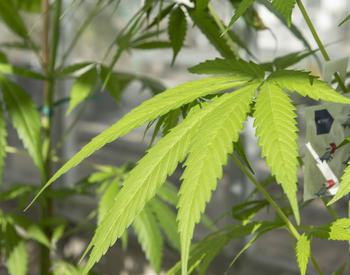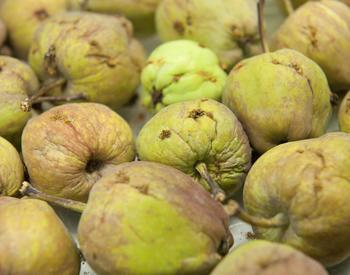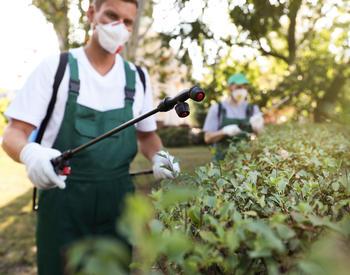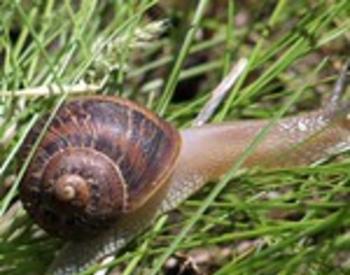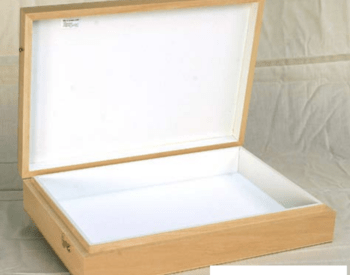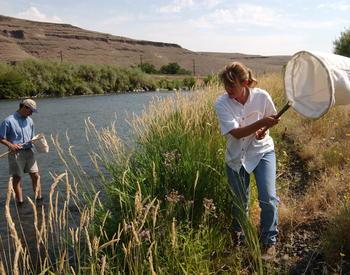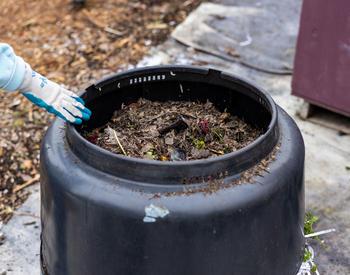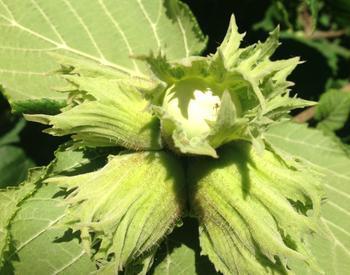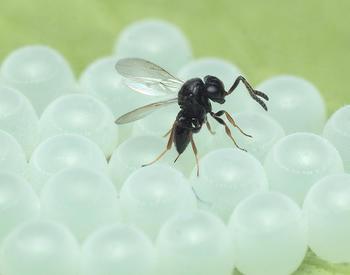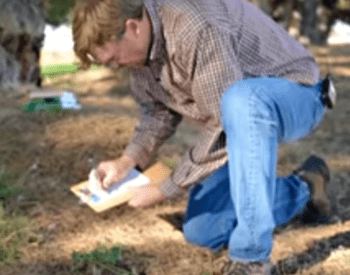The corn earworm (Helicoverpa zea) is a serious insect pest of outdoor hemp grown for smokable flower and CBD production in Oregon. The corn earworm occurs across North America, except in Alaska and northern Canada. It goes by many common names based on the crop where it inflicts economic loss, such as corn earworm in corn, soybean podworm in soybean, and cotton bollworm in cotton.
It feeds on various plant parts, leaves, flowers, pods, buds and kernels, depending on the crop. In hemp, corn earworm caterpillars feeding on flower buds can cause significant damage and may also lead to bud rot (figure 1). The caterpillars can cause an economic loss of the harvestable product in affected hemp plants.
Biology and Identification
Although the lifecycle of the corn earworm is not fully understood in hemp, information developed for other crops (e.g., corn, cotton and tomato) is useful until further research is conducted in hemp.
Moths laying eggs
Each corn earworm adult female moth can lay up to 25 eggs in a day, 1,500 eggs throughout her lifespan and lives for two–three weeks. Eggs are laid individually on hemp flower buds and leaves close to hemp buds (figure 2). Eggs are extremely small (~0.02 inches in diameter), dome-shaped and pale green when first deposited. Eggs turn yellow and then gray with prominent ridges when mature. In about a week, the eggs hatch into caterpillars.
Hatched caterpillars
Newly hatched caterpillars are tiny (~0.08 inch). Caterpillars develop fast, have five immature stages and fully matured caterpillars are about 1 inch long after two–three weeks. The caterpillars can occur in multiple colors including green, pink and dark brown to almost black but are mainly green on hemp. The caterpillar has a brown- to black-colored head with rows of dark-colored bumps and bristles along its body (figure 3).
Mature caterpillars
Mature caterpillars leave the feeding site, drop to the ground and burrow into the soil where they change to the pupal stage. In summer, adults emerge after approximately two weeks, resulting in a new generation. In the fall, the pupal stage remains dormant until the following growing season.
Monitoring and scouting
To assess the risk of corn earworm caterpillar damage for hemp flower buds, it is critical to monitor and scout the corn earworm populations from the early flowering period.
Traps
It is usually difficult to monitor corn earworm moths in a hemp field without deploying a pheromone-baited trap because the moths are only active at night. Hemp growers should not confuse corn earworm moths with butterflies seen flying around during the daytime.
Pheromone lure
The Heliothis trap baited with a corn earworm pheromone lure can be used to monitor the adult moth populations (figure 4). The pheromone lure only captures male adults. Hemp growers can order the traps and lures from several U.S.-based companies (e.g., Great Lake IPM, Gemplers and Scentry Biological Inc.)
Monitoring
To monitor corn earworm moths effectively, a trap should be deployed at the hemp field border by late July or early August and maintained throughout harvest. Trap captures should be regularly recorded, ideally about two times per week (e.g., Tuesday and Friday). Lures should be changed at two-week intervals. Moths should be emptied from the traps each time monitored.
Identification
Correct identification of corn earworm moths in a pheromone baited trap is also crucial. The pheromone traps can capture both the corn earworm and the false corn earworm male adults. However, the false corn earworm has not been documented as a hemp pest, even though it is a closely related Lepidoptera species to corn earworm. False corn earworm adults can be distinguished from corn earworms by their smaller size, as well as a dark spot and dark margins on the hind wing (figure 5).
Scouting
Because of the limited knowledge of pheromone trapping data, it is recommended to scout hemp plants for corn earworm caterpillars and eggs, mainly around the flower bud area during flowering, to determine whether application of any treatment is warranted.
Management strategies
Biological-based pesticides are the only option that hemp growers can rely on to manage corn earworm caterpillars on hemp at this point in time. Based on the article “Arthropod Management Tests,” three biological pesticide products are shown effective to control the corn earworm caterpillars in hemp:
- Gemstar LC, nuclear polyhedrosis virus of corn earworm.
- Gemstar LC in combination with BotaniGard ES, Beauveria bassiana, strain “GHA.”
- XenTari DF, Bacillus thuringiensis (Bt.) strain “Aizawai”.
All three products are permitted for use on cannabis in Oregon.
Here are important reminders for biological-pesticide use to control insects in hemp fields:
- Compared to many synthetic pesticides that kill insects on contact, biological pesticides must typically be ingested to kill.
- Thorough plant coverage with the pesticide is critical for good control.
- When biological pesticides are exposed to sunlight, they degrade rapidly. The effective persistence on plants is short-lived, often less than seven days.
- Multiple spray applications, likely two times a week, may be needed for corn earworm caterpillar control to maintain coverage during outbreaks while adults are continuously laying eggs.
¡Use los pesticidas con seguridad!
- Póngase ropa de protección y equipo de seguridad según las recomendaciones de la etiqueta. Báñese después de cada uso.
- Lea la etiqueta del pesticida—aunque lo haya usado antes. Siga al pie de la letra las indicaciones de la etiqueta (y cualquiera otra indicación que Ud. tenga).
- Tenga precaución al aplicar los pesticidas. Conozca su responsabilidad legal como aplicador de pesticidas. Usted puede ser responsable de heridas o daños resultantes del uso de un pesticida.
